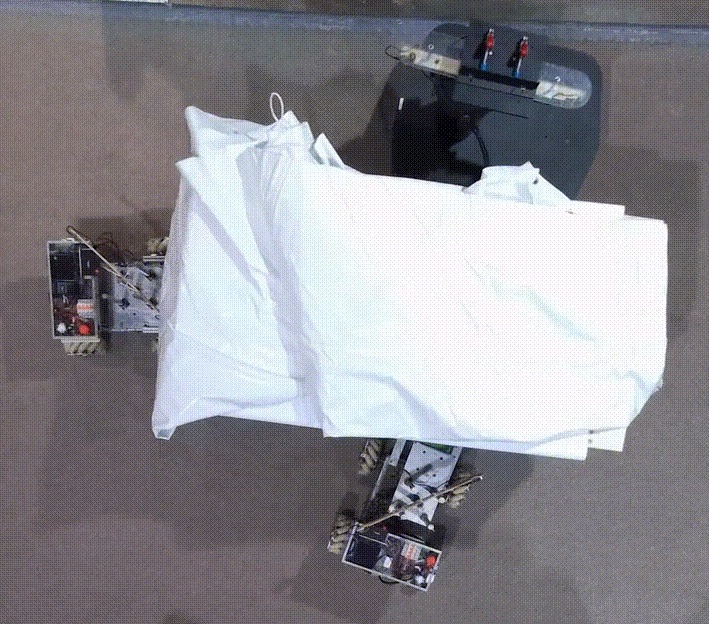Project Video Link
Fabrics used in large tents are strong and heavy to withstand environmental specifications such as snow and wind loads. Manufacturing tents requires joining cut pieces of this heavy material using a variety of processes such as sewing, ultrasonic welding and Radio Frequency (RF) welding. In many cases, large pieces of heavy, dense fabric must be moved through a stationary welder multiple times. As smaller pieces of tent fabric are joined, the pieces that have to be moved or wrangled becomes larger and larger. In general, wrangling these large pieces of heavy, dense material is done manually. This manual wrangling of the heavy tent material is hard, strenuous work. In this project, we develop robotic technologies to assist the direct labor in wrangling large, heavy pieces of tent material to produce Emergency Medical Facilities that address health care needs of the SARS-CoV-2 pandemic.
Distributed and Coordinated Multi-Robot Assembly of Large Structures
ARM Institute
Glenn Saunders
John T. Wen
Multi-Robot Task Planning in Large Structure Manufacturing,
Advanced Robotics in Manufacturing (ARM) Institute
Glenn Saunders
Agung Julius, John Wen
A swarm of five mobile robots of three different designs is successfully demonstrated. Operator bending, twisting, lifting and tugging motions associated with RF welding of large tent pieces are reduced by approximately 50%. Without any optimization and using prototype robots, the average material transport time for this operation is shown to already equal current manual cycle times. A Swarm Controller is demonstrated that enables control of individual holonomic or non-holonomic robots and control of a user-defined swarm configuration. Localization within +/- 5 cm using ultra-wide band sensing, along with sensor fusion, is successfully demonstrated, as are a new user interface and wireless teach pendant. Caging transport and full scale RF welding using actual tent materials are demonstrated in a production relevant environment.
In this project, technology is demonstrated that enables programming, managing and controlling multiple mobile robots to work together to carry out a joint task. The robots may be holonomic or non-holonomic, and the task may involve the robots remaining in a fixed or dynamic formation. The technology is applicable to any situation where multiple mobile robots are needed to transport a rigid or flexible material connected between them, or to change the shape of a flexible materials so connected, either indoor or outdoor. This capability has potential application in manufacturing (transport and draping of large composite sheets), construction, site setup at remote locations such as conflict zones, or extra-planetary site preparation.





